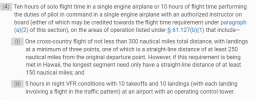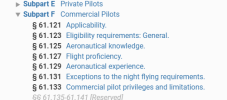This is a great forum and I have been here a while now.
I started my training in 2007 and took a long break and got my PPL (ASEL) (88hrs) in 2014 but I have not flown after that.
Main reason being cost and family etc commitments.
I have a full-time job but flying has been my passion and want to get back in it and if possible work towards ATP.
There are no 152s around flight schools here, so I was thinking of getting checked-out on a 172 and do my flight-review.
Then build hours towards the 50 hrs XCountry flights.
Question - I have around 11 hrs of solo when working on my PPL, so can that be counted towards 11hrs of PIC?
If so, I have a remaining 239 hrs to meet the CPL requirements. Is that correct?

Would it be better to get the Commercial and then get the Instrument Rating,
as this way I will be more fresh and/or proficient with Instrument flying?
I started my training in 2007 and took a long break and got my PPL (ASEL) (88hrs) in 2014 but I have not flown after that.
Main reason being cost and family etc commitments.
I have a full-time job but flying has been my passion and want to get back in it and if possible work towards ATP.
There are no 152s around flight schools here, so I was thinking of getting checked-out on a 172 and do my flight-review.
Then build hours towards the 50 hrs XCountry flights.
Question - I have around 11 hrs of solo when working on my PPL, so can that be counted towards 11hrs of PIC?
If so, I have a remaining 239 hrs to meet the CPL requirements. Is that correct?

Would it be better to get the Commercial and then get the Instrument Rating,
as this way I will be more fresh and/or proficient with Instrument flying?


